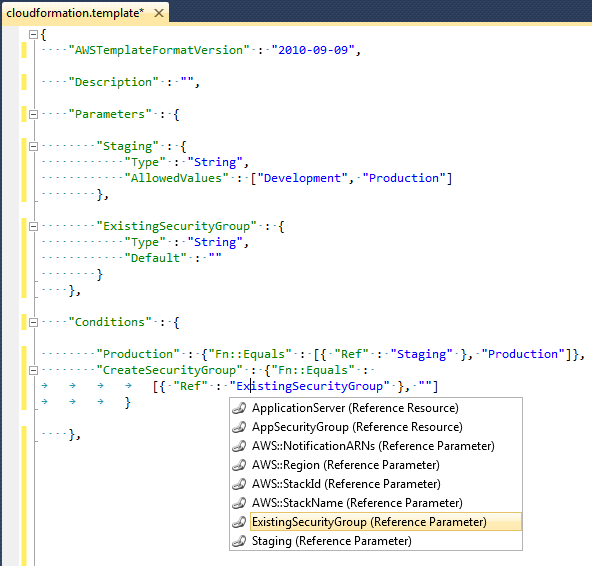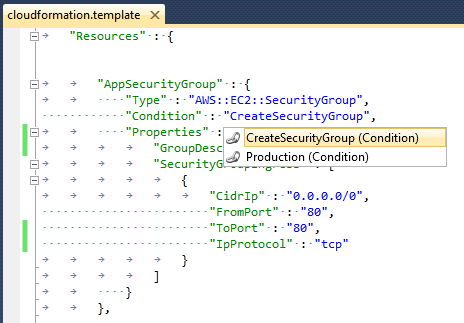AWS Developer Tools Blog
Resource Condition Support in the AWS CloudFormation Editor
AWS CloudFormation recently added support for conditions that control whether resources are created or what value to set for properties on resources. The CloudFormation editor included with the AWS Toolkit for Visual Studio was updated to support conditions in version 1.6.1. If you have never used the CloudFormation editor, we have a screencast that gives a quick introduction to the editor.
Defining Conditions
To get started with conditions, you first need to define them.

In this example, there are 2 conditions defined. The first condition checks to see if the deployment will be a production deployment. The second condition checks to see if a new security group should be created.
Using Conditions to Control Resource Creation
For all resources defined in a template, you can set the Condition property. If the condition evaluates to true, then the resource is created with the CloudFormation stack that is the instantiation of the CloudFormation template.

This security group is created only if the CreateSecurityGroup condition evaluates to true, which occurs if no security group is passed in to the ExistingSecurityGroup parameter.
Using Conditions to Control Resource Properties
You can also use conditions to determine what value to set for a resource property.

Since the security group is going to be either created or set by the ExistingSecurityGroup parameter, the SecurityGroups property needs to have its value set conditionally depending on how the security group was created. Also, in this example, we are going to control the size of the EC2 instance depending on the deployment being a production deployment or not.
For more information about using conditions with CloudFormation, check out the AWS CloudFormation User Guide.